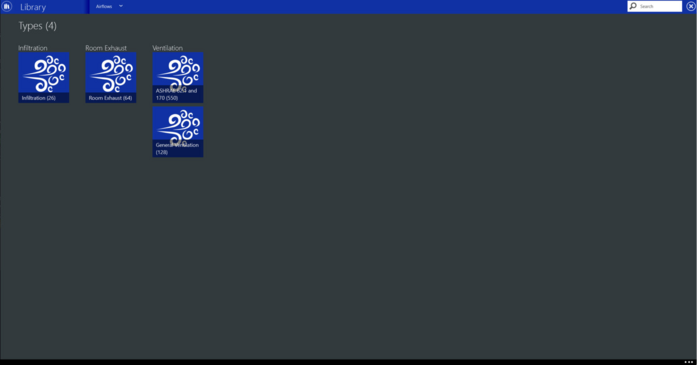Airflow
The airflows library category will allow you to create and manage airflow types that will be applied to zones in the creation of a building. They simulate the heat and moisture gains and losses from air. There are three types of airflow loads:

Click here for more information on General Library Navigation.